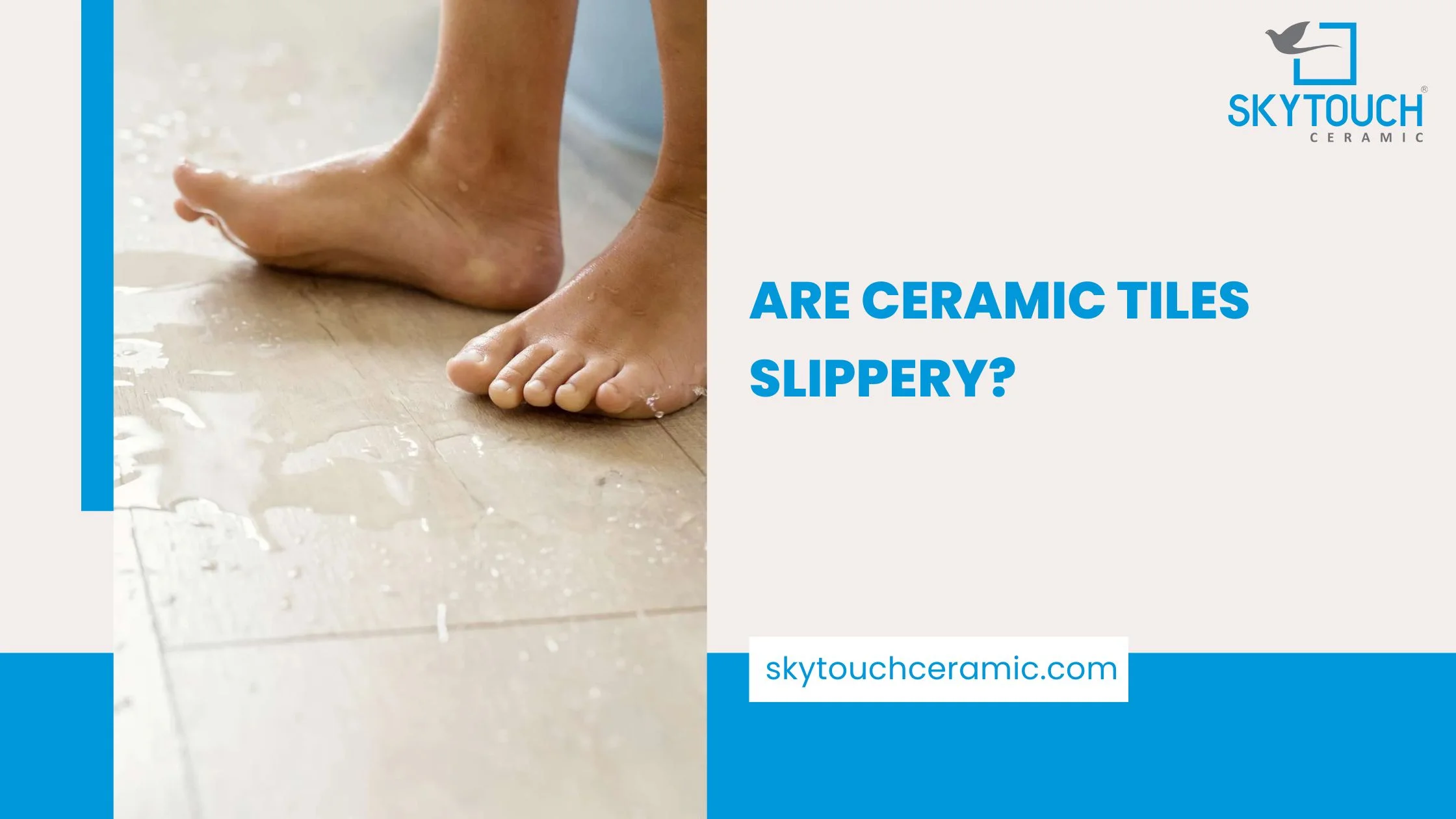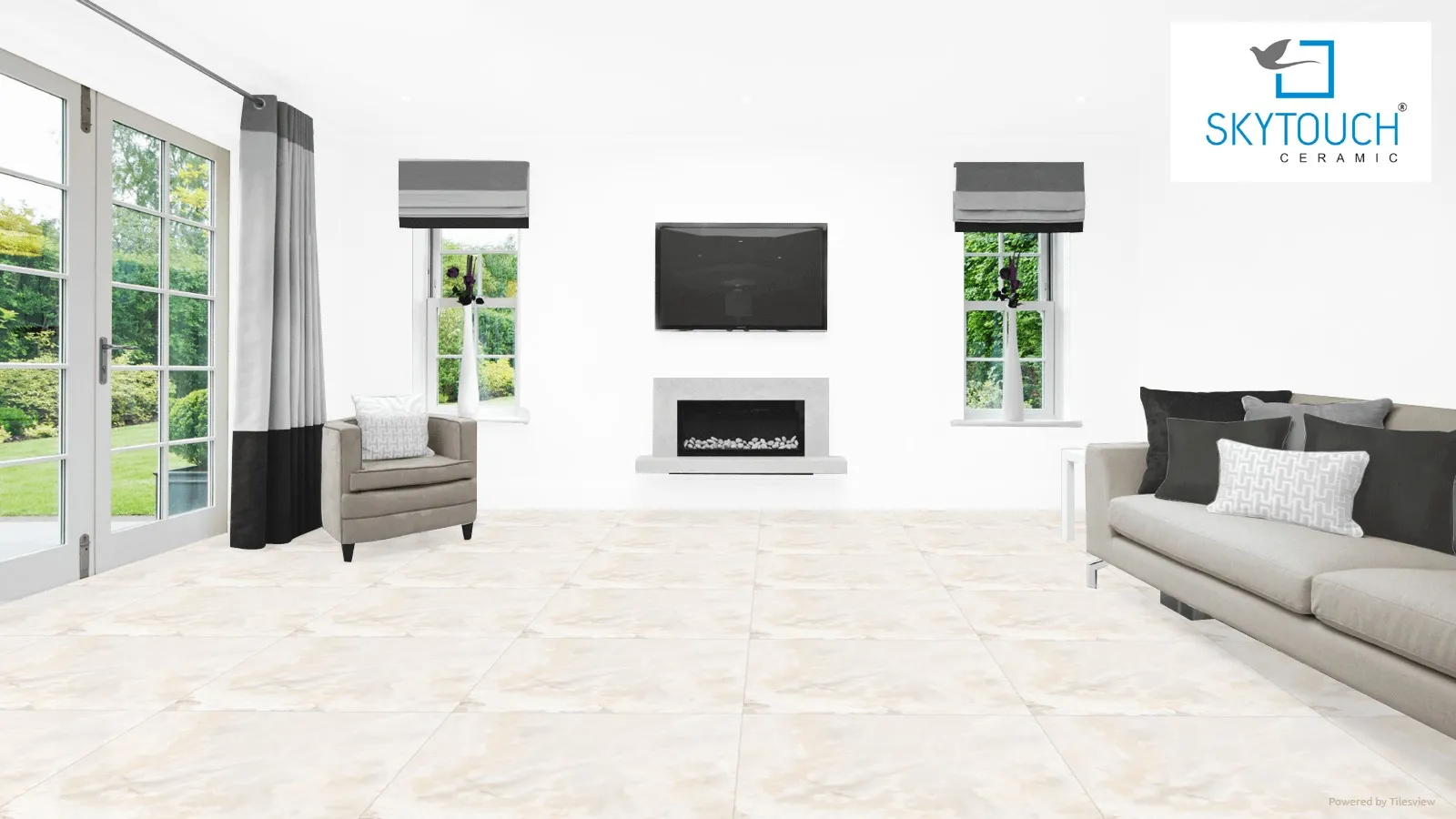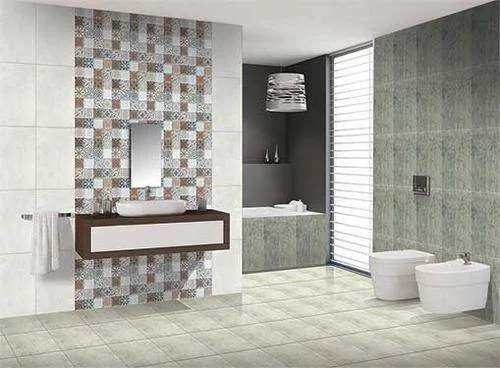It happens more often than you think: You walk into the bathroom and nearly slip on the ceramic tile. It's not just a minor annoyance, either—it's a real safety hazard. It's no wonder you want to find out why your ceramic tiles are so slippery and how you can fix it.
At first glance, it seems like it should be simple enough: Ceramic is one of the oldest materials used in flooring, right? Shouldn't it be safe? Turns out, the answer isn't so straightforward. There are a lot of factors to consider when it comes to determining how slippery a ceramic tile can be and once you understand them, you'll know exactly what needs to be done to make your tiles safe.
Explore High Quality Tile Collection
Whether you're worried about yourself or your family members slipping on your ceramic floors, read on as we dive into the truth about slippery ceramic tiles and solutions that can help.
Are Ceramic Tiles Inherently Slippery?
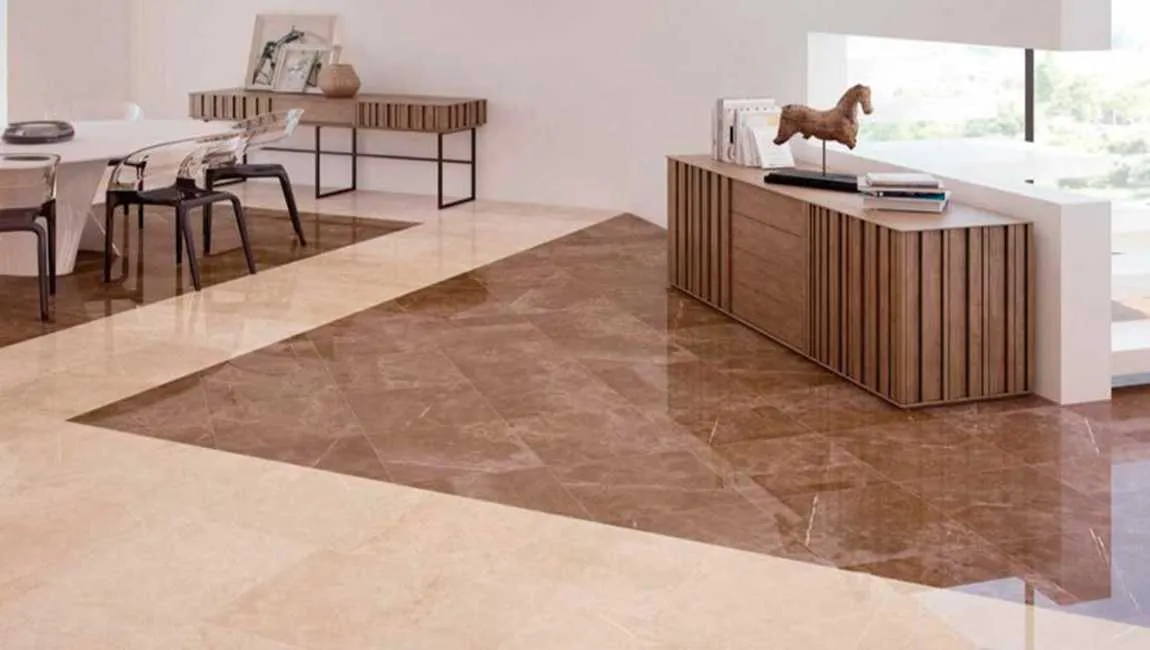
Are ceramic tiles slippery? It's a question many people ask when considering installing ceramic tiles in their homes. The short answer is that it depends on the gloss level of your chosen tiles.
High gloss tiles, for example, are more prone to becoming slippery when wet. This is because the surface layer of the tile creates a glossy film on top, which prevents it from being able to absorb any liquid or debris that may fall on it. On the other hand, low gloss and matte tiles are not as prone to slipping since they generally have a textured surface which provides some grip when wet.
The good news is that regardless of the gloss level, there are measures you can take to reduce the risk of slipping on your ceramic tiles. For instance, installing an anti-slip coating like Traction Pro to your tile flooring can create a more slip-resistant surface and provide extra traction in high-traffic areas. Additionally, investing in an absorbent doormat at your entryway can also help prevent dirt and water from being tracked onto your floors.
Factors That Affect Ceramic Tile Slipperiness
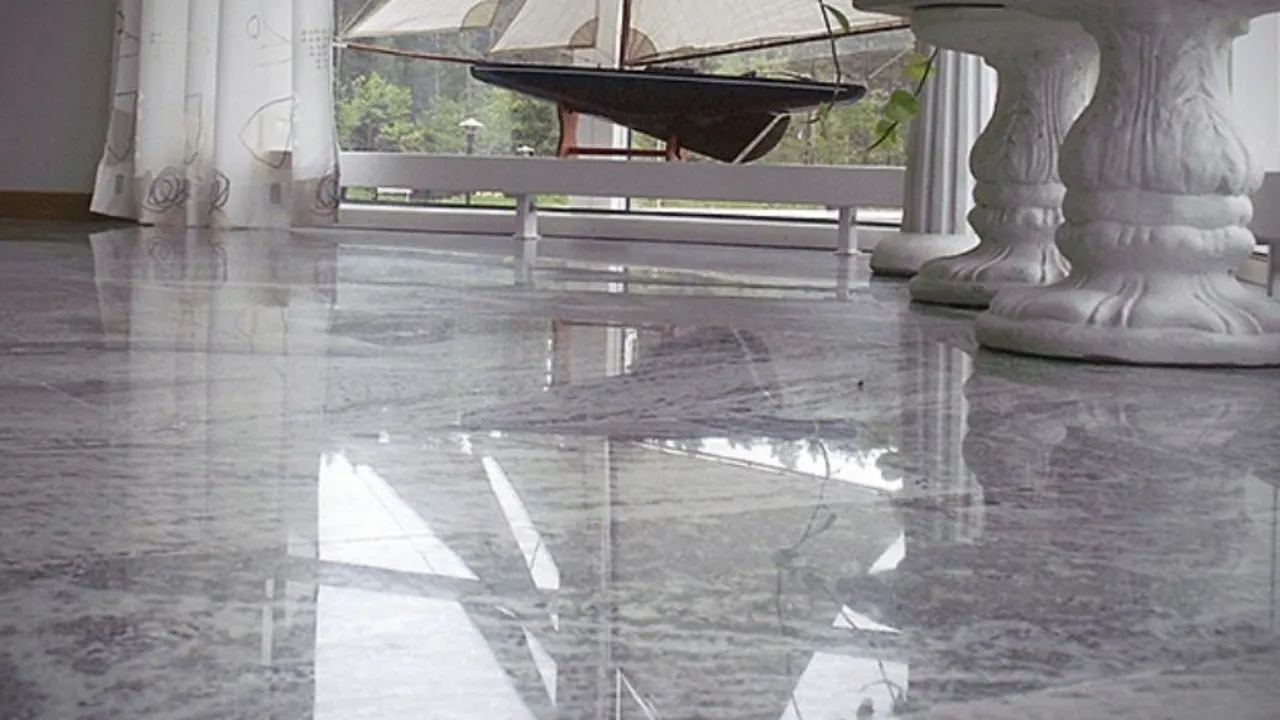
Have you ever been to a public pool or bathroom with slippery ceramic tile on the floors? It's an all-too-common story. Thankfully, there are some ways to make sure your ceramic tile floor stays as safe as possible.
Several factors contribute to the slipperiness of ceramic tiles.
These include:
• The glaze and texture of the tile. A glossy, smooth-textured tile is more likely to be slippery than a textured or matte tile.
• The angle of the surface. The degree of tilt or slope makes a difference in how slippery the surface will be; even a small degree of tilt can increase slipperiness.
• The type of grout used in the installation. Grout that is not sealed properly can absorb water, making it an ideal breeding ground for bacteria and mold, which can make surfaces slippery when wet.
• Knowing these factors can help you decide what kind of tiles to use in your bathroom or pool area and how to properly care for them so that they remain safe for everyone who uses them.
Testing the Slip Resistance of Ceramic Tiles
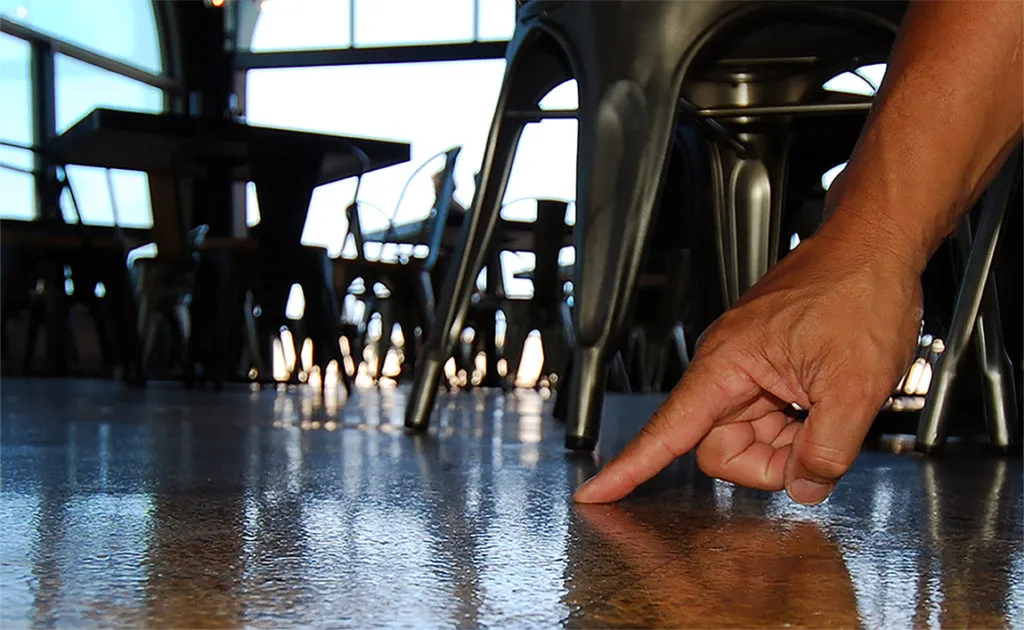
So, are ceramic tiles slippery? The short answer is: it depends. A lot of people seem to think that just because ceramic tiles are made from a smooth surface, this means that they are more likely to be slippery. But in reality, it's not the material but rather the texture and surface finish of the tile that is going to determine how slippery it's going to be.
To test the slip resistance of your ceramic tiles, you will want to conduct a coefficient of friction (COF) test. This test requires a specialized machine and uses two surfaces the ceramic tile and some kind of reference standard to measure how much foothold your tile has when wet.
The result is provided as an index value which ranges between 0 (completely smooth surface with no grip) and 1 (perfect grip). Generally speaking, if you get a value of 0.60 or more you can consider your tile safe for wet areas like showers or bathrooms. But if it gets any lower than that, then you might have a slippery floor surface on your hands and you’ll need to look into fixing it.
One way you could go about fixing this is by increasing friction with non-slip treatments like abrasive cleaners or sealers; these can help improve traction on ceramic tiles so you don’t have to worry about slipping in slippy areas any longer!
How to Make Ceramic Tiles Less Slippery
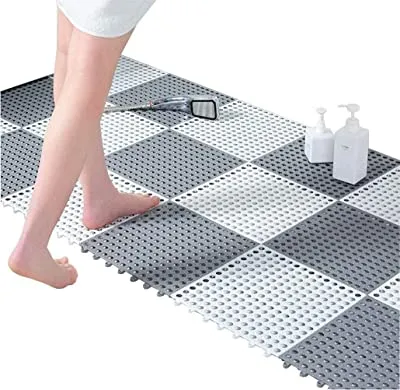
If you're concerned that your ceramic tile floor may be a bit too slippery, there are some great products out there that can fix that. You can find products that work great for both indoor and outdoor applications, including:
• Anti-Slip Protection For Ceramic Floors
These products come in a variety of forms, such as sprays, waxes, and sealers. They will form a microscopic texture on the ceramic tiles to increase traction and anti-slip protection. It’s also incredibly easy to use—simply clean the tiles with a mild cleaning agent and then apply the anti-slip product according to the instructions on the package.
• Rug Gripper Pads
Rug Gripper Pads are adhesive sheets that can be used under area rugs, runners, or mats to enhance grip and reduce slipping. The pads provide cushioning and prevent rug edges from curling up at edges, plus they will reduce slips on ceramic floors by providing extra grip on the underside of carpets or rugs.
• Slip-Resistant Mats & Rugs
You can also invest in slip-resistant mats or rugs specifically designed for ceramic tile floors these are made with an extra-tacky material that grips onto slippery surfaces such as ceramic tiles as it is walked over. Plus, these mats come in a variety of colors and sizes so you should have no problem finding one to match your décor perfectly!
Home Remedies for Slippery Tiles
Slippery tiles can be a very dangerous hazard in any house that can increase falling and injuries. While there are still such professional anti slip treatments, there are some simple and cost – effective remedies which are available at home to make traction on your tiles is improved. Some of the best home solutions to make your tile floors safer include:
1. Vinegar and Water Solution
Dirty tiles can make your tiles slippery due to a buildup of soap, grease or residue. A mixture of vinegar and warm water will clean your floors and remove these layers so the tiles will have the natural grip again.
How to Use
• Mix equal parts of white vinegar and warm water in a spray bottle.
• Spray the solution on the tiles and mop with a microfiber cloth.
• For stubborn grease, add a few drops of dish soap to the mixture.
2. Baking Soda Scrub
Baking soda is a natural abrasive that can help roughen smooth tiles, providing extra grip.
How to Use
• Sprinkle baking soda over the floor.
• Scrub using a damp brush or mop.
• Rinse with clean water and dry thoroughly.
3. Lemon Juice for Natural Grip
Lemon juice not only removes slippery residues but also provides a mild anti-slip effect due to its acidity.
How to Use
• Squeeze fresh lemon juice onto the floor.
• Let it sit for 10 minutes before scrubbing with a brush.
• Rinse with warm water and dry.
4. Dish Soap and Warm Water
Dish soap mixed with warm water is a simple way to break down slippery residues caused by cleaning products, oils, and dirt.
How to Use
• Mix a few drops of dish soap in a bucket of warm water.
• Mop the floor thoroughly, focusing on high-traffic areas.
• Rinse with clean water and dry to prevent residue buildup.
5. Use Salt for Extra Traction
Salt is smoothing to rough surfaces and very useful for tiles outdoors.
How to Use
• Put a little salt over the tiles and rake it into the surface with the notched side of the 2x4.
• It will be better if it is left overnight.
• The next morning sweep or mop it away.
6. Aloe Vera Gel for Anti-Slip Coating
Aloe vera gel will create a slightly slippery film on the tiles that reduces slipperiness.
How to Use
• Mop the floor to apply a thin layer of aloe vera gel on the floor.
• Walk on it only after it completely dries.
• It should be repeated once a week for best results.
7. Add Rugs and Mats
Such measures, although not perfect, can make a huge difference in easing this problem, especially in bathrooms and kitchens that tend to be wetter areas.
Pro Tip: You should select mats with rubber attached to it for the additional stability.
8. DIY Sand and Paint Mixture
If you are adding outdoor tiles, you can create a textured surface on those using fine sand mixed with paint or clear sealer.
How to Use:
• For tile safe paint or clear sealer, mix fine sand into the tile.
• Dab or apply a thin coat of it on the slippery tiles.
• Using the area is permitted only after the area has dried completely.
Comparison of Tile Types Based on Slipperiness
| Tile Type | Finish | Slip Resistance (Dry) | Slip Resistance (Wet) | Best Usage Areas | Anti-Slip Treatment Needed? |
| Glossy Ceramic Tile | High Gloss | Low | Very Low | Living rooms, Walls | Yes, especially in wet areas |
| Matt Ceramic Tile | Matt | High | Moderate | Kitchens, Hallways | Not always, but recommended |
| Textured Ceramic Tile | Textured | Very High | High | Bathrooms, Entryways | No, naturally slip-resistant |
| Porcelain Tile | Polished/Glazed | Moderate | Low | Living rooms, Walls | Yes, for wet areas |
| Matt Porcelain Tile | Matt | High | Moderate | Bathrooms, Patios | Not always, but recommended |
| Natural Stone Tile | Rough/Textured | Very High | Very High | Outdoor, Pool decks | No, naturally slip-resistant |
| SPC Flooring | Textured/Embossed | Very High | Very High | Bathrooms, Wet areas | No, naturally slip-resistant |
Choosing Slip-Resistant Ceramic Tile for Safety
Are ceramic tiles slippery and a safety hazard? It depends. Smooth glazed ceramic tiles can be slippery, but there are also slip-resistant tiles that are safe to use and won't give you any slip and fall worries.
When it comes to choosing tile for a slippery bathroom, choosing the right type is key look for textured, abrasive surfaces with low absorption, like porcelain stoneware. This type of tile has a coarse finish that gives better traction when wet. Also, choose a lighter color dark surfaces become much hotter in sunlight, leading to more chances of slipping.
Here are some tips for choosing slip-resistant ceramic tile that will keep your family safe:
1. Look for tiles with rough or textured surfaces and grooved patterns for extra traction.
2. Consider smaller-sized tiles that fit together tighter and provide more grip.
3. Choose light colors or matte finishes to avoid too much light reflecting off the surface.
4. Look for skid-resistance ratings (which indicate the thickness of the anti-slip coating) if possible.
5. Avoid glossy or high gloss finishes they're extremely slick when wet.
6. Choose tiles certified by an appropriate laboratory like the Ceramic Tiles Council (CTC).
With these features in mind and a little extra care when cleaning and maintaining your ceramic tile, you can make sure your surfaces are safe and durable for years to come!
Conclusion
In short, ceramic tile floors are often slippery when wet, but there are many ways to make them less slippery and safer. You can add a non-slip coating, use different grout styles, employ anti-slip mats and rugs, and ensure proper cleaning and maintenance.
Ultimately, you can have the beautiful and modern floor of your dreams without compromising safety. With the right knowledge and a few easy-to-implement strategies, you can significantly reduce slippery ceramics that the whole family can enjoy taking a stroll on. Don't let slippery tile floors be the bane of your existence any longer - take control and make your floor safe!
For more information contact us at info@skytouchceramic.com / +91 70466 90088

